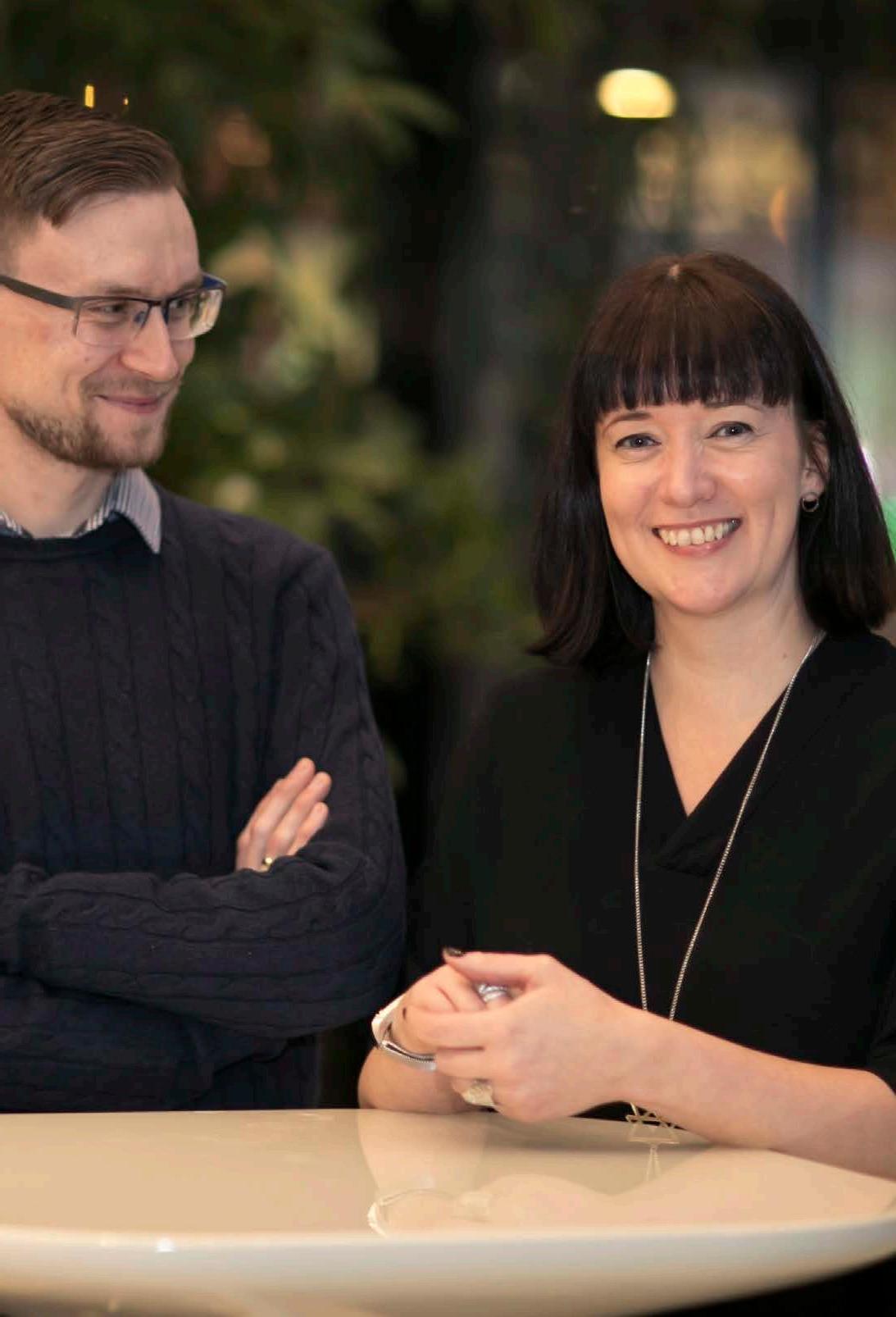
6 minute read
Business
Our work to ensure sustainable business
A customer’s point of view:
Advertisement
Norgips is the largest plasterboard producer in Norway and owned by Knauf. One of our top long-term strategic goals is to produce plasterboard the most sustainable way. We therefore are looking at all aspects of this from raw material, transport, production and finally how our product is used by our customers. Greencarrier Freight Services approached us with a solution for transporting our raw material from Europe to Drammen, Norway.
This solution enable us to reduce our CO2 emission and number of trucks on the roads. With Greencarrier Freight Services warehouse solution we now have access to our raw material just-in-time.
Jan Sæterdal Sourcing Specialist Norgips Customer focus for me is to create good communication and listen to the customer. One´s behavior and service attitude matter a lot when creating a trust to build upon.
Therese Bohlin Sales Greencarrier Liner Agency, Sweden
Good logistics is when you understand your customer and their business in the sense that you don’t think of their products as just boxes being moved from one place to another.
But instead, you put yourself in your customer’s shoes to truly understand their needs and solve their problem. This is a relevant aspect of the freight forwarder’s role in an increasingly digitalised world.
Carl Larsson LCL Specialist Greencarrier Freight Services, Sweden

Acting according to the law is obvious to most companies, but acting ethically is not always as obvious. While the law is the key starting point for any business, acting in an ethical way means distinguishing between right and wrong, and then making the right choices. Our ethics underpin the decisions anyone in the Greencarrier Group makes. We believe that working as an ethical business attracts and retains customers, investors and employees.
Building relations for a lasting partnership
Working in the Greencarrier Group means complying with laws, ordinances, regulations and other requirements – as a minimum. But we actually want to do more than what the legislation requires from us.
We strive to be a fair and honest business partner. To our help we have our policies and code of conduct. But as a value driven company it also means that we should be able to distinguish right from wrong and choosing the right conduct based on our values. Read more on page 14-15.
That is why we work with our culture and values in our group, and often work with partners that share a similar mindset. customers, listen to their needs and solve their supply chain challenges.
We have support systems to handle claims in an efficient and correct way.
We also want to be a competence partner within different fields to our customers and partners, and have the ambition to inspire them to take an even larger responsibility for the environment.
As mentioned, our vision is creating a more sustainable tomorrow. Sustainable of course means having the environment in mind when we suggest a customer transport solution. But sustainable also means that we want to build relationships for a sustainable long term partnership with customers as well as suppliers. Together with our customers and suppliers, we work to find new activities that support innovative and sustainable transport solutions.
We also strive to find CSR-projects together with our customers and suppliers, to contribute to a sustainable development for environment and society – and build long lasting and meaningful relationships at the same time.

Johan Jemdahl CEO Greencarrier Group
How the pandemic drives necessary development in our supply chains
The corona virus did in a short time shift from being locally spread far away in Wuhan, China, to a global pandemic that paralyzed large parts of the world and brought drastic constraints in most of the world’s countries.
The impact on businesses of all kinds has been severe and demand in many industries has dropped as the air puffs out of a balloon with a major hole in it. Most of us were taken by surprise with the actual speed with which demand plunged.
At the beginning of the crisis and especially when China initially experienced the spread of infection, supply chain focus here in the West was to find alternatives, to review our distribution and to some extent to start to think about the redundancy and diversification of our supply chains. As the disease cases spread across Europe and later North America, Latin America and Africa, we ended up in a survival phase. Then, the Covid-19 pandemic has largely been about managing the effects and blocking punches. However, it is high time to do what good leaders and companies do, they live here and now while they shape tomorrow.
Put Supply Chain Risk on the management agenda
As countries around the world are easing up on restrictions, allowing travel, and we as consumers are starting are starting to consume we will see increased pressure on supply chains. I believe and hope that the pandemic will put the flashlight on supply chain and that supply chain and its risk management will be high up on corporate strategic focus plans. Unfortunately, this has historically been a topic that tends to be too much in the supply chain organization and which only ends up on corporate management and board’s agenda in times of crises. Conducting supply chain risk management is not solely up to supply functions to operate and achieve. A large part of the supply structure is put on the drawing board in the form of technical solutions, materials and component choices and with the often implicit choice of a specific supplier. Here, the supply chain must come in for successful management when a crisis strikes.
A Supply Chain risk management function
For successful risk management and redundant supply chains, the supply chain organization must be involved early in the product development flow. And in order to contribute there very well-developed component engineering capabilities are needed. The Supply Chain function also needs to have employees with a deep understanding of the commercial are and customer needs and as such a genuine interest in competitive advantages and customer value creation. I believe that the Supply Chain role has never been more complex and demanding than it is today. When I started working in Supply Chain in the mid-nineties, it was mostly about having domain expertise. That’s not enough today. Working with Supply Chain risk management is a profession in itself. Although it is vital to incorporate risk management in the process and in all areas of responsibility in the supply chain, I believe that a specific risk management function is required and not just a part responsibility on top of someone’s regular tasks.
Covid-19 will drive the development of regional supply chains
I think we will see an increased degree of regionalized value chains, something I have been saying for the last ten years. If you repeat something long enough, eventually you get to the point of realization. Increasingly automated production, shorter product life cycles, requirements for short lead times from customers, sustainability aspects and increased requirements for redundancy in the supply chain will control where companies choose to source. Covid-19 will also drive the development of these regional supply chains.
Value-creating data is the killer app of the future
Personally, I have great faith in what systems and technology can help us with. But it is not the systems or processes themselves that create great deeds. In my world, no systems, processes or methods can replace the people in the organization. People’s ability to work together towards common goals is always crucial to success. In the future, man and machine will interact even more dynamically and knowledge and relationships will be less tied to individuals. With increased digitization and digitalization, what was previously in the heads of individuals is now a push of a button away. The value creation of individuals is no longer about sitting on “facts” but rather acting cognitively and creating value from the large amounts of data generated in the value chains. Using this data for analysis and conceptualization to bring insight to its customers becomes a “killer app” in future sales processes.










